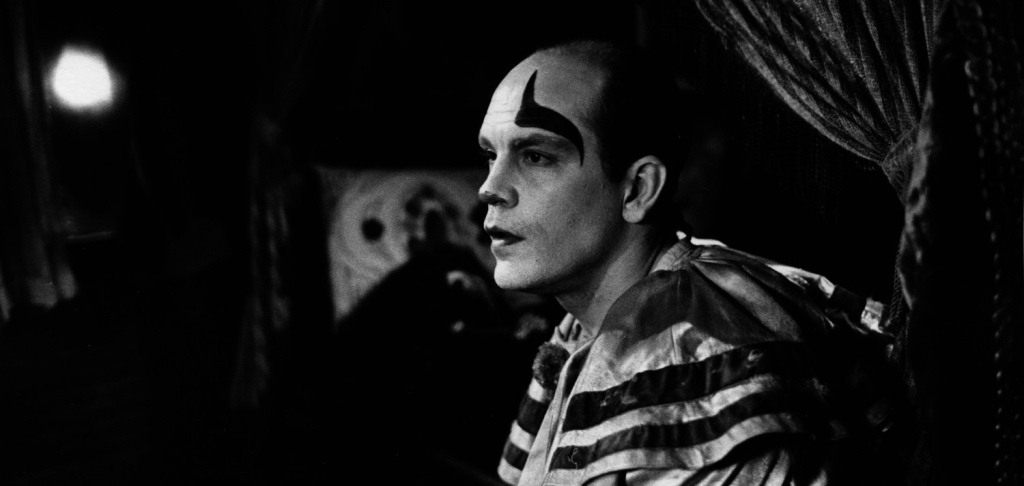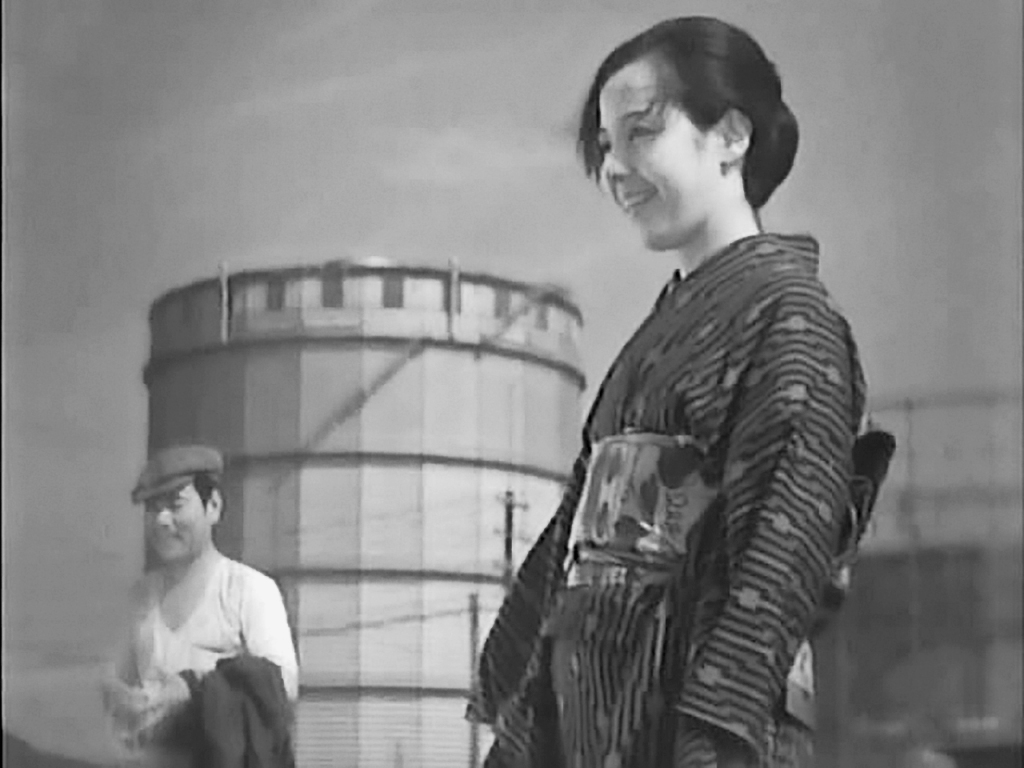 Kleinman (Woody Allen) is forcibly woken in the middle of the night by an angry mob, demanding he join them in tracking down a serial killer. Meanwhile the sword-swallower (Mia Farrow) at a local circus leaves her unfaithful clown boyfriend (John Malkovich) and finds herself lost in the back streets at night.
Kleinman (Woody Allen) is forcibly woken in the middle of the night by an angry mob, demanding he join them in tracking down a serial killer. Meanwhile the sword-swallower (Mia Farrow) at a local circus leaves her unfaithful clown boyfriend (John Malkovich) and finds herself lost in the back streets at night.
Woody Allen’s 1991 comedy Shadows and Fog pays tribute to German expressionism in its visuals and Franz Kafka in its story, but its heart remains firmly set in safer territory. It boasts a tremendous cast as well, with some of America’s best performers of the time performing in a range of interesting roles. It is something of a disappointment, then, to see so much of its energy spent on re-playing Allen’s over-familiar nervous persona. To an extent he is simply providing what his audience likely expects, but ultimately he brings a raft of great elements together in service of a lacklustre movie.
Visually the film is a marvel. Styled after the great German directors of the early 20th century, it has a stark and moody aesthetic that reflects the best of Lang and Murnau. Cinematographer Carlo di Palma, a regular collaborator with Allen, ensures that Shadows and Fog is far and away the best-looking feature of Allen’s entire career. It generates a spectacular atmosphere that contrasts well with the comedic narrative.
That narrative feels infused with a Kafka-esque sense of the paranoid. Kleinman is bullied by a group of nameless angry men into joining their vigilante gang. He is told their is a plan, but not what it is. Attempts to clarify his role lead to nothing but furious recriminations and scoldings from the other men. When Kleinman tries to work things out for himself, every choice seems to make him a more obvious suspect in the killings. It is wonderfully effective.
It seems a minor pity that, for all the skill involved in the plot and setting, Allen should fall back on such an over-utilised trope for his protagonist. There is a deliberately ordinary and pathetic quality to Kleinman’s character that does not match the rest of the film. He feels a contemporary character in a stylised period setting. It is the first of Allen’s films in which he played the lead role in 17 years, and it came about as a result of Orion Pictures demanding he star again to boost the film’s box office. There is splendid creativity and skill employed all through the film, except for where it counted the most. Dedicated aficionados will derive enjoyment for certain, but in a broader scale of American film-making it feels tired.
The character also disrupts the film’s ability to find a proper ending. What is presented is a somewhat truncated and ridiculous bit of comedy, but the bleak setting of the film demands something more complex and mature. A lot of potential is wasted in the space of minutes – almost as if Allen simply could not come up with a satisfying ending, and finished on a gag instead.
Such a shame: the rest of the film is great, and packed with a range of excellent actors playing well-written and entertaining characters. John Malkovich’s clown reveals great depths as he goes – despite his infidelity. Mia Farrow’s tragic heroine Irmy undergoes a richly developed journey from beginning to end, one that takes her to a brothel of brilliantly played and scripted sex workers (including the likes of Kathy Bates, Jodie Foster, and a particularly strong Lily Tomlin) and the arms of a rich, idealistic student (John Cusack). This is one of the best casts Allen has ever assembled; even small roles are populated with great actors.
In the end it is a difficult film, because the bits that are good are brilliant and the bits that disappoint really let the rest down. It is an average film surrounded by a near-masterpiece. The main reason it fails is not because it is not good, but because it simply is not as good as it should be. What is a viewer to do?





Leave a comment